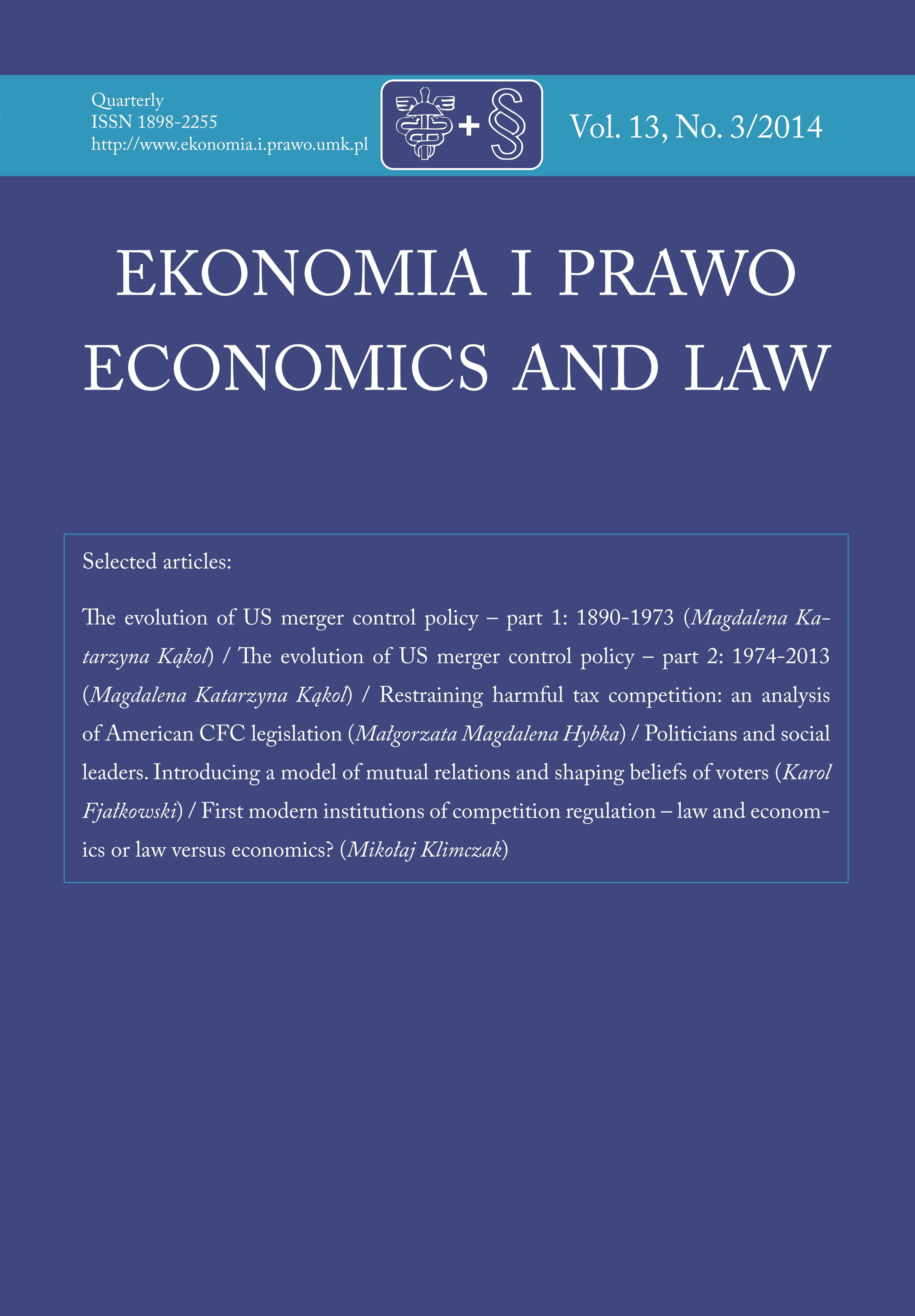THE EVOLUTION OF US MERGER CONTROL POLICY – PART 1: 1890-1973
THE EVOLUTION OF US MERGER CONTROL POLICY – PART 1: 1890-1973
Author(s): Magdalena KakolSubject(s): Economy, National Economy
Published by: Wydawnictwo Naukowe Uniwersytetu Mikołaja Kopernika
Keywords: mergers; merger control policy; US antitrust; theory of competition
Summary/Abstract: The aim of the study is to present the changes in US merger control policy at different stages of development of competition theories and views on pro- and anti-competitive effects of mergers (especially Harvard, Chicago, and Post-Chicago Schools of Competition). The research methods used in the study include literature review as well as the in-depth analysis of US legislation, antitrust agencies' enforcement policy and federal courts' case-law with focus on changes in the economic analysis of mergers and their impact on market competition. The first part of the study covers the years 1890-1973. Apart from explaining some procedural issues it highlights the early days of merger control policy in the United States with an emphasis on the creation of antitrust legislation and institutional framework for its enforcement. In 1890-1950 the antitrust authorities' approach to mergers was generally friendly as large enterprises were supposed to play an important role contributing to the development and international expansion of the US economy. However, together with a surging increase in concentration in the US market and with the emergence of new competition theories that focused their research on market structure (Harvard School) this approach changed for the very interventionist (1950-1973). At that time the main purpose of merger control policy was to preserve competitors and small businesses rather than to improve consumer welfare, economic efficiencies or to protect competition process.
Journal: Ekonomia i Prawo. Economics and Law
- Issue Year: 13/2014
- Issue No: 3
- Page Range: 403-415
- Page Count: 13
- Language: English

